Centuries ago, spices were the treasures of kings, as much cherished and sought after as gold. Today, you don’t have to sail the Seven Seas to find them; they’re available at your supermarket. What are spices, exactly? Most consist of the seeds, shells, buds, fruit or flower parts, bark or roots of plants that grow in the tropical regions of the world.
Iranian Spices with their various aromas and colors and their different medicinal properties have been used for seasoning and flavoring Iranian food. In addition to the unique flavor they gave to the dish, these condiments also cured the diseases and illnesses of the consumers.
Different types of Iranian spices
The aroma and flavor of spices, along with their amazing properties and benefits, has made people of different regions of Iran use a special combination of spices in preparing their food.
These spices are based on the geographical and climatic characteristics and body temperament of the inhabitants of each region.
Iranians believe that spices not only add flavor to your food but also bring you many other benefits. Some have protective properties against cancer, diabetes, heart disease, inflammation and so on. Here are 11 healthy Iranian spices and their amazing benefits plus tips on how adding them to your diet.
Cinnamon
Cinnamon is a powerful nutrient, a rich source of iron, calcium, manganese and antioxidants. Studies show that cinnamon is one of the best medicines to control and fight diabetes and blood pressure.
Cinnamon is obtained from the bark of the tree. You can add cinnamon powder to your oat meal, apple pie or add it to your smoothie. It can also be used in bread, cakes and pastries. Pour some on your cheese, milk or cream for breakfast and enjoy. Cinnamon tea can also be used to control blood sugar.
Cinnamon can improve brain function and reduce the risk of Alzheimer’s disease. Cinnamon has a warm nature and can help you lose weight by increasing your metabolism.

Cardamom
Cardamom has a long history of use to soothe the stomach. According to traditional Iranian medicine, cardamom relieves acidity and makes fatty foods more digestible. Cardamom contains a phytochemical called Cineole with antiseptic properties. Cardamom also has a distinctive and pleasant aroma that is used in many food products such as tea. Add some cardamom seeds to your tea, coffee, hot chocolate or hot milk to combat bad breath and help relieve sore throat. Also add some cardamom powder to cakes, cookies or bread during baking.
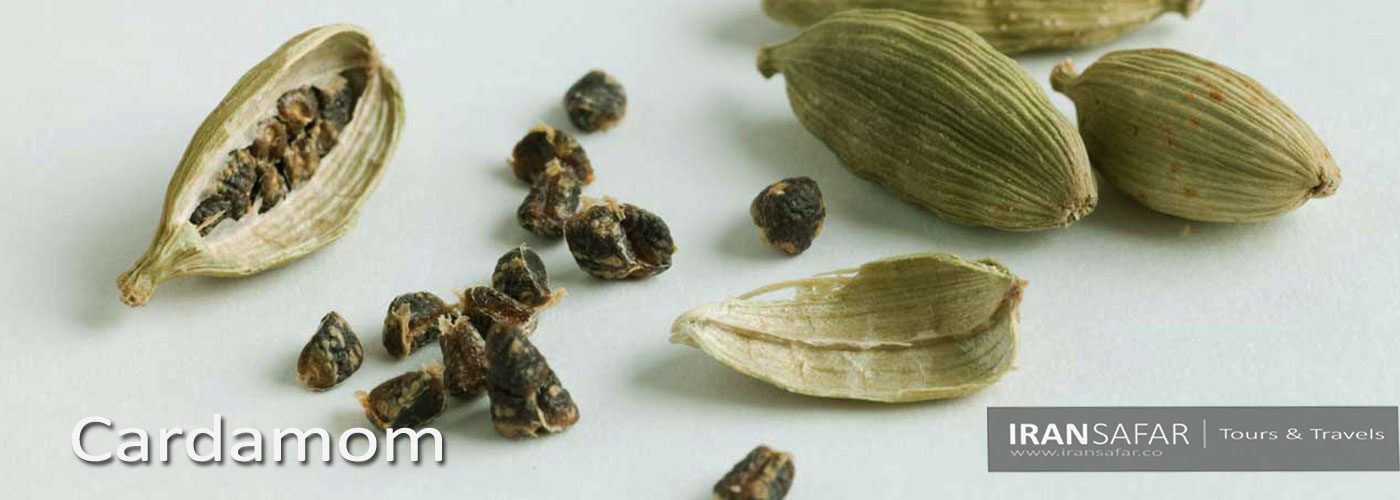
Coriander
Coriander is a fragrant plant that both its leaves and seeds are used as a flavoring and seasoning spice in Persian cuisine.
Coriander seeds have a very pleasant aroma and it is used in the preparation of candies and some sweets. Coriander seeds have anti-arthritic and anti-inflammatory property; they can remove accumulated water and excess interstitial fluid from the body by increasing urination.
A mixture of powdered coriander seeds and honey can be used to strengthen the skin, reduce pimples and treat skin eczema. Coriander seeds can also be used to exfoliate and cleanse the skin, lower blood cholesterol, thereby preventing heart attacks and strokes. Coriander seeds strengthen the digestive system and liver mechanism, and can also prevent high blood pressure.

Turmeric
Turmeric, sometimes known as Indian saffron or golden spice, is a plant that grows in Asia and Central America. Turmeric found in stores is made from the powdered roots of this plant. The bright yellow color of this spice has inspired many cultures to use it as a dye for textiles. Also, turmeric powder is an ingredient in curry powder.
Curcumin is the active ingredient in turmeric that benefits from strong biological properties. Traditional Indian medicine has recommended turmeric for a wide range of health conditions, including chronic pain and inflammation. Western medicine has also studied turmeric as a pain reliever and healer.
Anti-cancer Curcumin
Cancer is known worldwide as a very dangerous disease that can be difficult to treat due to uncontrolled cell growth, but traditional medicine experts believe that in fact, curcumin in turmeric kills cancer cells, reduces the growth of blood vessels in cancerous tumors, and prevents the metastasis or spread of cancer cells in the body.

Chili Powder
Chili Powder is a seasoning blend of ground dried chilies and other spices that can give a spicy and fiery taste to your food. The hot spicy taste of Chili Powder is due to the presence of a compound called “Capsaicin” in this plant. Capsaicin can stimulate the appetite and increase metabolism. Therefore, its continuous consumption causes weight loss.
Common chilies include: New Mexico chilies, Ancho chilies, or Cascabel chilies. These are usually combined with spices such as cumin, and paprika. Other properties of Chili include anti-headache and pain killer properties, improvement of cold symptoms, antioxidant and reducing the growth of cancer cells.
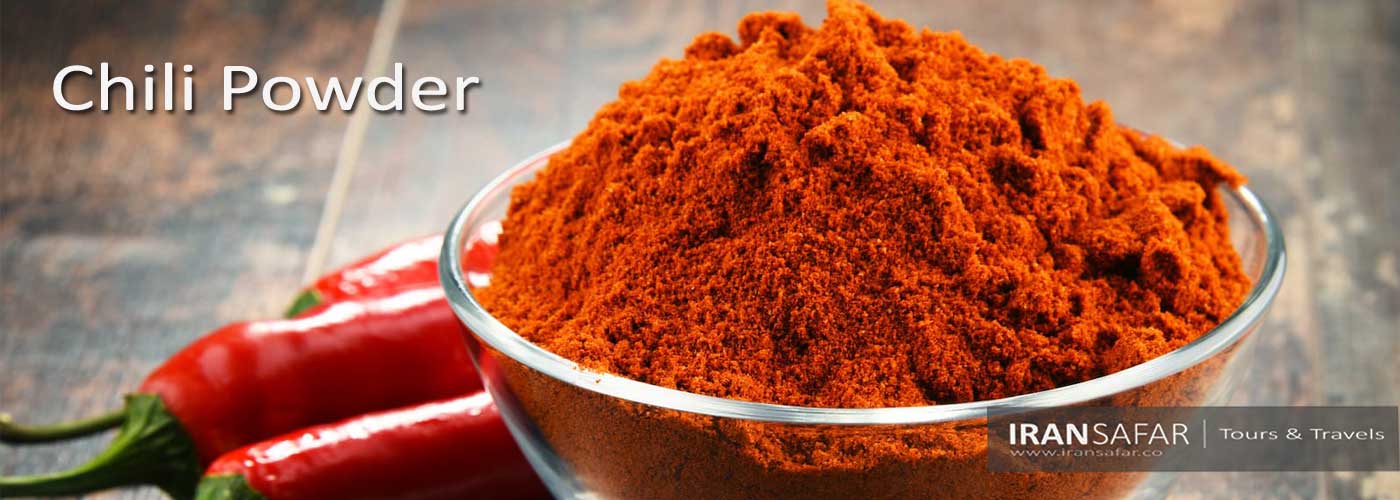
Fennel
Fennel seeds have many medicinal properties. This plant seed stimulates the secretion of hormones needed by women, so it is usually recommended for women.
Consumption of fennel during lactation can increase milk production. Fennel can fight the growth of cancer cells, expel urinary tract stones and relieve menstrual disorders. Fennel can also improve bloating, inflammation and other intestinal and gastrointestinal diseases.
Many cosmetic companies use this fragrant plant in the manufacture of natural cosmetics because fennel has wonderful properties for the skin. All components of this plant, including seeds, stems and leaves, are sources of vitamins B and C, which promote collagen synthesis and maintain youth.

Cumin
Cumin is a leafy plant that grows low to the ground in China, India, Iran, and in some Mediterranean regions. Cumin seed is popular all over the world as a spice. Cumin has become the subject of medical research, as anecdotal evidence claims it has all kinds of health benefits.
Most of cumin’s benefits are claimed to improve digestion, immune system, and circulation. It also increases metabolism
Black cumin and cumin are two of the most common types of cumin in Iran. Cumin is a plant with strong anti-flatulence benefits. Therefore, consuming cumin along with exercise and proper diet can help you lose weight.
Cumin seeds contain naturally occurring substances that work as antioxidants. That means that these substances (apigenin and luteolin) keep the tiny free radicals that attack healthy cells from being successful. Antioxidants help you feel healthier and more energetic, and they help keep your skin from looking aged.
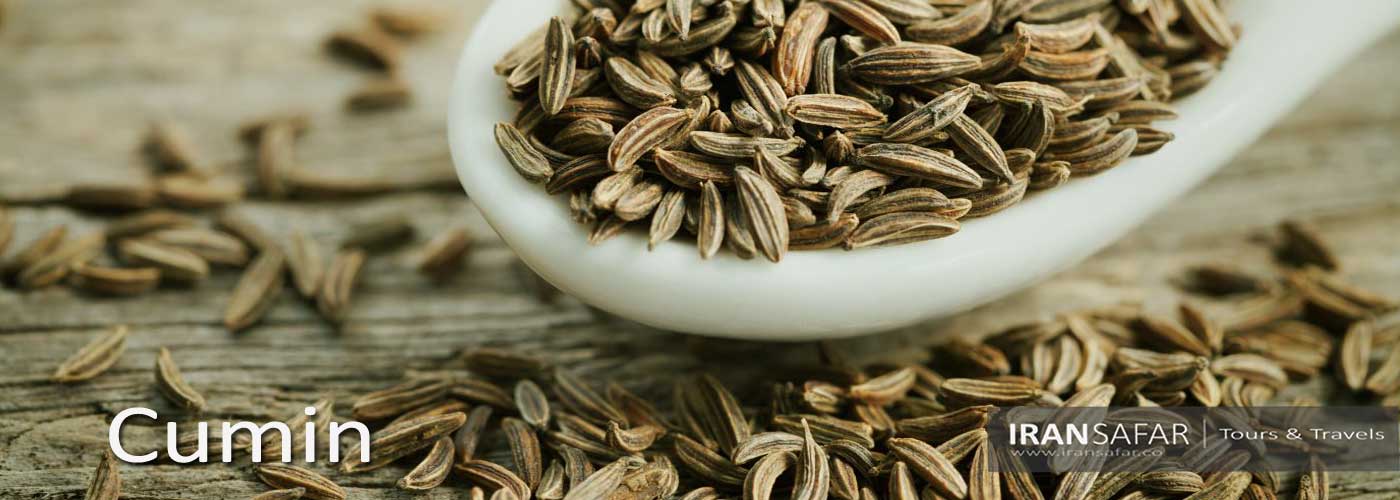
Saffron
Saffron is the most expensive spice in the world with extraordinary health benefits. This plant is cultivated in Iran, Egypt, Spain, Italy, Turkey, Switzerland, Pakistan and Morocco. It is one of the most important sources of non-oil exports in Iran; every year more than 75% of Iranian saffron is exported abroad, including the UAE, India and Europe.
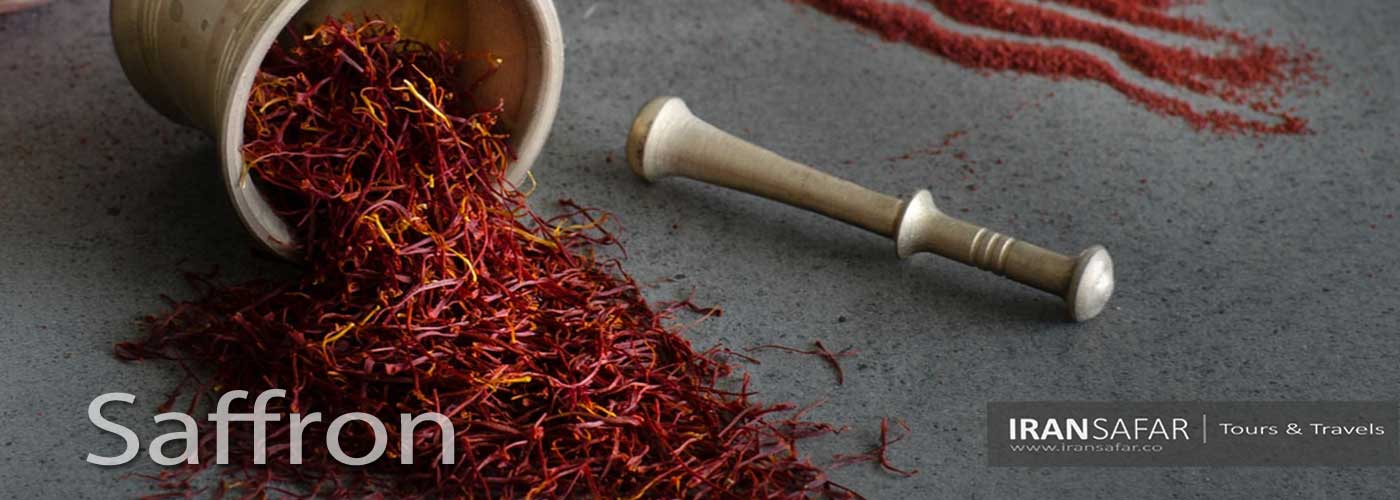
What is saffron?
Saffron is a perennial plant that grows up to 30 cm in height. This plant has six-petal purple flowers with three stamens and a pistil leading to the three-branched red stigma. The part used in this plant is the end of the plant’s style and the three-branched stigma, which is known as saffron and has a fragrant smell. Known as red gold, this valuable plant is the main source of income for locals in most regions of Khorasan province of Iran.
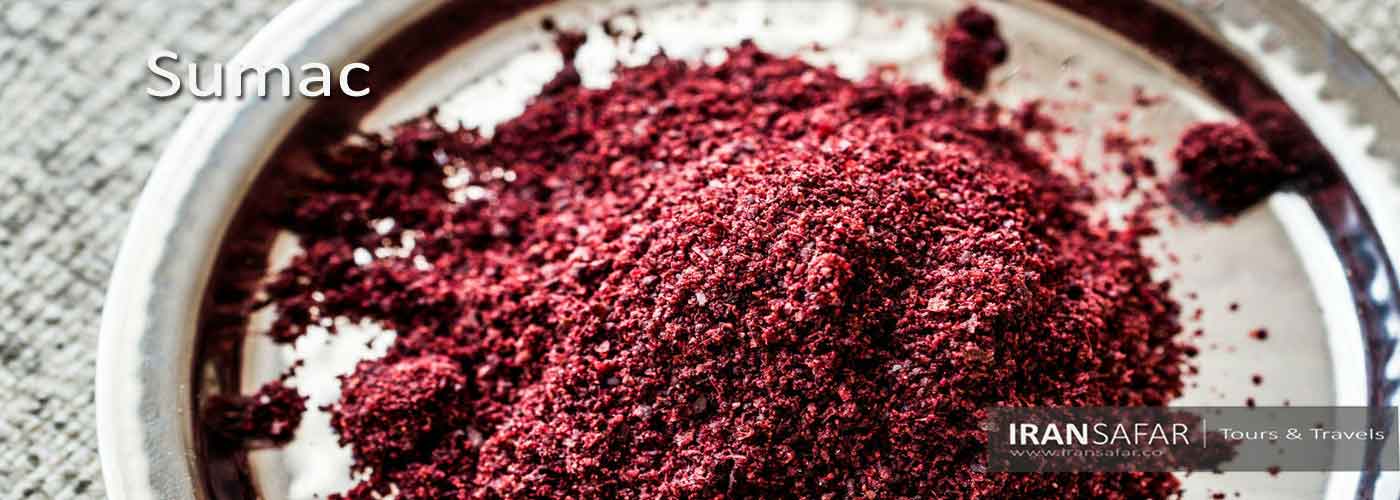
Sumac
Sumac is a mountain shrub that has clustered fruits. The color of the fruit is red and brown and the taste is astringent, but it becomes sour when ripe. The fruit is used as a spice after being ground, along with dishes such as Iranian kebabs. In ancient Greece, Sumak plant wood was used to dye woolen textiles, and in Italy it was used to dye leather. In some countries it is prepared as a drink that is effective in relieving stomach pain and digestive disorders.
In Middle Eastern alternative medicine, the use of sumac in lowering blood pressure is a popular method. According to preliminary studies, Sumac is an antihypertensive plant that treats hypertension (high blood pressure). On the other hand, whichever laboratory method we use to measure the antioxidant activity of substances, this spice usually takes first place. According to the latest researches, Sumac has 66 times more antioxidants than blueberries!
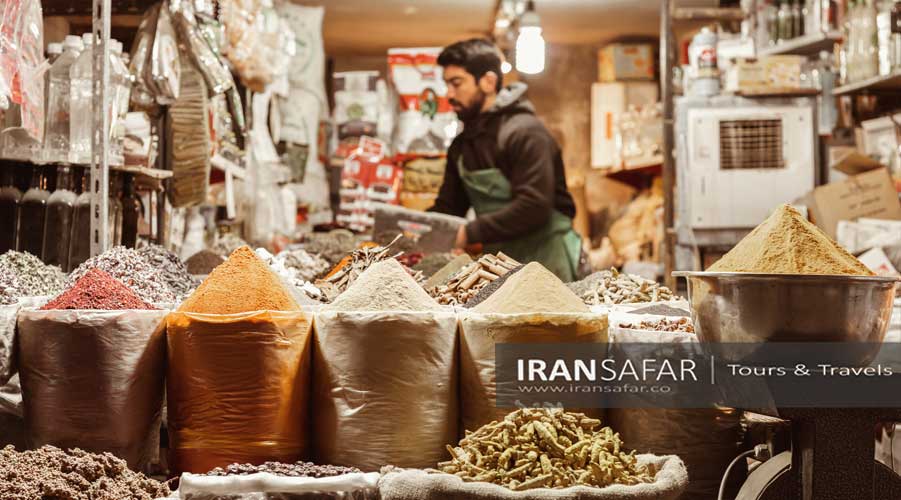
One of the souvenirs that you can prepare during your trip to Iran is a spice called “Seven Colored Spice “. This mixture consists of 7 spices including cinnamon, sumac, angelica, ginger, black pepper, red chili, and turmeric. The combination of these spices, in addition to its eye-catching beauty, also has many medicinal properties. Seven colored spice is commonly used in cooking broths and stews.
In ancient and medieval time, the main paradigm of medicine was Humoral theory in middle east and west Asia. This theory of medicine was based on four temperaments (Mizaj or Mezaj). Some historians believed that this theory of medicine was developed in ancient Greece and Greek physician Hippocrates (460 BCE–370 BCE) is often credited with developing the theory of the four humors – blood, yellow bile, black bile, and phlegm. But some others think the Persians and Indians created it.
Globally, this medicine theory reached its zenith in Iran for sure, concurrent with polymaths such as Rhazes, Ibn-e Sina (Avicenna) and Esmaeil Jorjani. The basic knowledge of four humors as a healing system in ancient Iranian Medicine, was developed by Avecienna in his encyclopedia called The Canon of Medicine. According to the theory of the four temperaments, the substances that make up and control the function of the human body are: black bile, yellow bile, blood, and phlegm. Avecienna and Hippocrates linked each of these humors to an element in the universe and atmospheric conditions:
- Black bile: related to earth, with cold and dry properties.
- Yellow bile: related to fire, with dry and warm properties.
- Blood: related to air, with moist and warm qualities.
- Phlegm: related to water, with moist and cold qualities.
Ancient Spice Routes
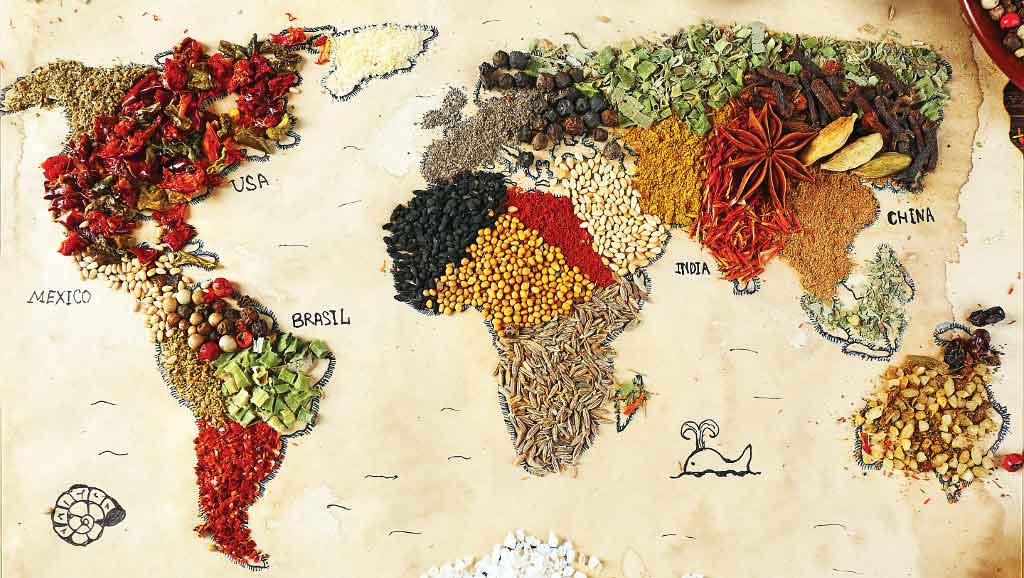
In ancient times, the spice trade took place between old civilizations in Asia, Northeast Africa and Europe. Spices such as cinnamon, cassia, cardamom, ginger, pepper, and turmeric found their way into the Near East before the beginning of the Christian era, where the true sources of these spices were withheld by the traders and associated with fantastic tales. The Spice Routes, also known as Maritime Silk Road, is the name given to the network of sea routes that started from the west coast of Japan and connected the East with the West. Traders traveled through the islands of Indonesia, around India to the lands of the Middle East – and from there, across the Mediterranean sea to Europe. It is a distance of over 15,000 km and even today, is not an easy journey. From our very earliest history, people have traveled the Spice Routes. At first, they probably traveled only short distances from their home ports but over the centuries their ships sailed further and further across seas and oceans.
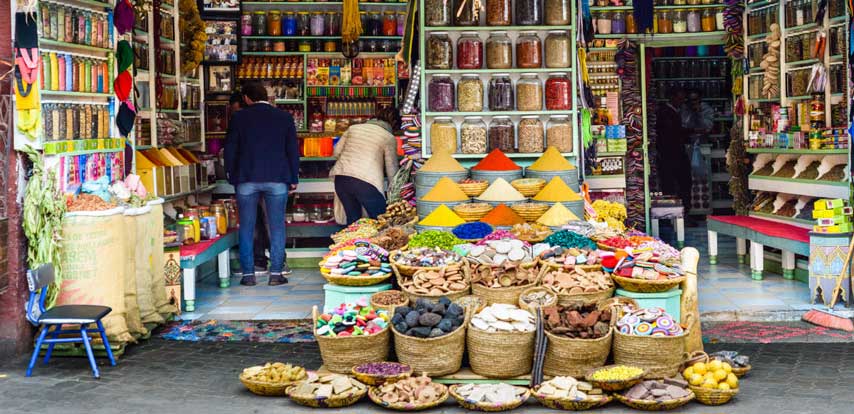

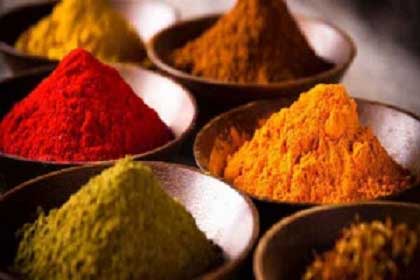
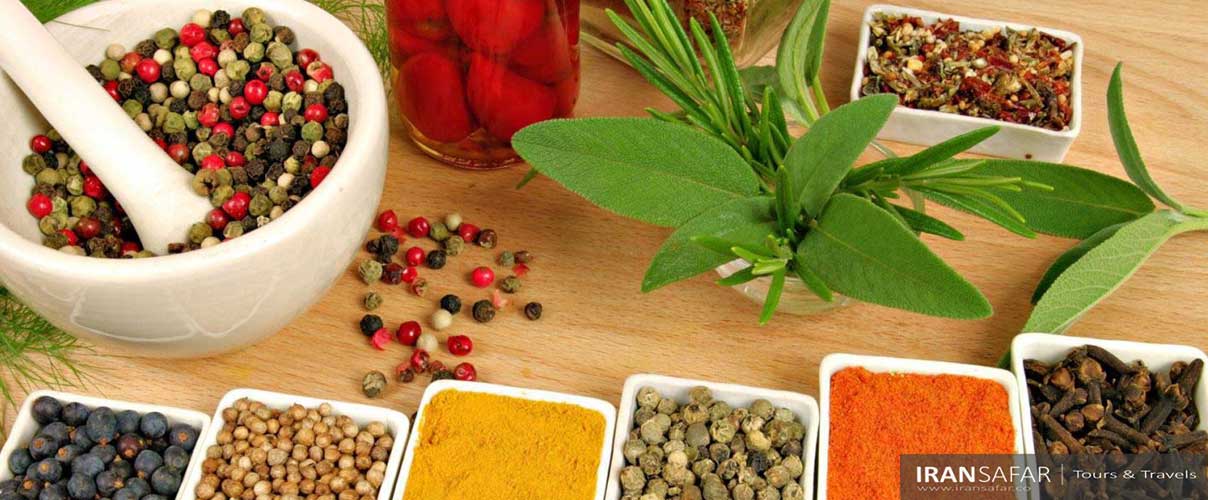

Assalamu Alaikum
I am speaking from Bangladesh.
I am some spice from your country
I want to pick up the item.
How to take
We love this information useful in our life important